How to Fall Asleep in Under 10 Minutes
Introduction
You lie in bed, eyes closed, lights off. But instead of drifting into peaceful sleep, your brain starts running a full mental marathon. The longer you stay awake, the more anxious you become — and suddenly, falling asleep feels impossible.
If this sounds familiar, you’re not alone. Millions of people struggle to fall asleep quickly, especially in our overstimulated, always-connected world. But the good news is: you can train your body and mind to fall asleep on demand.
In fact, research shows that with the right physiological techniques and mental cues, many people can fall asleep in under 10 minutes — naturally.
This guide explores the best strategies from neuroscience, sleep medicine, and relaxation therapy to help you shut down the “mental noise” and let your body do what it’s designed to do: rest. 💤
Looking for supplements for This? Click here.
🧠 Why You Can’t Fall Asleep Quickly
Before we fix the problem, let’s understand it.
Falling asleep isn’t a switch you flip — it’s a neurochemical process. When it doesn’t happen easily, something in that system is being disrupted.
🧩 The Common Culprits
Cortisol and adrenaline spikes — stress hormones signal danger instead of safety.
Overthinking — cognitive overactivity keeps your prefrontal cortex lit up like daytime.
Blue light exposure — phones, laptops, and LEDs delay melatonin release.
Caffeine or late-night eating — elevate alertness hormones.
Body temperature misalignment — your body can’t cool enough for sleep onset.
Falling asleep fast means aligning your mind, hormones, and environment into a calm, synchronized rhythm.
🌬️ Step 1: Master the Physiology of Relaxation

The body must relax before the mind does. Here’s how to trigger the parasympathetic nervous system, your built-in sleep switch.
🫁 The 4-7-8 Breathing Technique
Developed by Dr. Andrew Weil, this method calms the vagus nerve and lowers heart rate.
How to do it:
Inhale through your nose for 4 seconds.
Hold your breath for 7 seconds.
Exhale slowly through your mouth for 8 seconds.
Repeat this 4–8 times. Within a few rounds, you’ll feel your pulse slow and thoughts fade.
Why it works:
This pattern boosts carbon dioxide slightly, signaling your brain to reduce alertness.
Want to try Breathwork? Click Here.
🌊 The “Military Sleep Method”
Used by the U.S. Navy Pre-Flight School, this technique reportedly helped pilots fall asleep in 2 minutes, even during combat conditions.
Steps:
Relax your face completely — jaw, forehead, tongue.
Drop your shoulders; let arms hang loosely.
Exhale and relax your chest.
Relax legs, thighs, and calves.
Imagine a calm scene (floating on a lake, lying in a meadow).
If thoughts appear, repeat: “Don’t think.”
With practice, most people can drift off in 2–10 minutes.
The Body Scan Technique
A mindfulness-based approach to “turn off” muscle tension and bring awareness to calm.
How:
Start at your toes and mentally move upward — feet, legs, hips, chest, arms, shoulders, face — relaxing each muscle group as you breathe slowly.
Imagine melting into the bed with each exhale.
Pro tip: Combine this with 4-7-8 breathing for double effect.
🌙 Step 2: Prime Your Environment for Instant Calm
You can’t fall asleep fast if your surroundings send “daytime” signals.
🛏️ Darkness = Melatonin
Light is the strongest cue for your internal clock.
Use blackout curtains or a sleep mask.
Avoid screens 60–90 minutes before bed.
If you must use a phone, enable night mode or blue-light filters.
Even a small LED light can suppress melatonin production.
🌡️ Cool Temperature
Your core body temperature must drop about 1°C (1.5–2°F) to fall asleep.
Ideal range: 18–20°C (65–68°F).
Take a warm shower before bed — paradoxically, it helps cool your core afterward.
🔇 Noise Management
Use white noise or pink noise to mask unpredictable sounds.
Try soothing sounds like rain, ocean waves, or forest ambiance.
Avoid complete silence if it amplifies inner chatter.
🌸 Aromatherapy for Sleep Cues
Scents have direct access to the emotional centers of the brain.
Best sleep-inducing aromas:
Lavender 🌿
Chamomile 🌼
Sandalwood 🌲
Ylang-ylang 🌺
Diffuse or apply diluted oil to wrists before bedtime.
🧬 Step 3: Balance Your Hormones Before Bed
Falling asleep fast depends on the balance between melatonin (sleep hormone) and cortisol (stress hormone).
🌇 Time Your Light Exposure
Get sunlight within an hour of waking — this anchors your circadian rhythm.
Dim all lights after sunset.
Avoid bright bathroom or kitchen lighting before bed.
☕ Manage Caffeine
Caffeine has a half-life of 6 hours — that 3 PM coffee may still be active at 9 PM.
Switch to herbal teas like rooibos, peppermint, or lemon balm after noon.
🍵 Use Natural Sleep Support
Magnesium glycinate: 200–400 mg to relax muscles and lower cortisol.
L-theanine: 100–200 mg for calm alertness.
Glycine: 3 g before bed to lower core temperature.
Ashwagandha: 300 mg for stress reduction.
Tart cherry juice: Natural melatonin source.
(Always consult your healthcare provider before starting supplements.)
Looking for supplements for This? Click here.
💭 Step 4: Quiet the Racing Mind
The body can relax, but the brain might still be scrolling through memories, worries, or to-do lists. Here’s how to stop mental chatter.
✍️ The “Cognitive Dump”
Spend 5 minutes writing:
What you’re thinking about
What you need to do tomorrow
This offloads mental clutter. Once it’s on paper, your brain stops trying to remember it.
Looking for online therapy ? Click Here.
💭 Guided Visualization
Picture something peaceful and detailed — walking on a quiet beach, floating in water, or watching stars.
Visualization distracts the analytical brain and replaces worry loops with calming imagery.
🕊️ Gratitude Reflection
Before bed, think of 3 things you’re grateful for — even simple ones.
This shifts brain chemistry from cortisol to serotonin and oxytocin, inducing safety and calm.
🧘 Meditation Mini-Session
Try 5 minutes of “awareness meditation”:
Focus on the rise and fall of your breath.
When thoughts appear, notice and release them.
Over time, your brain learns to unwind faster when you enter bed — associating it with stillness, not stress.
🌿 Step 5: Nutrition and Timing
🍎 Don’t Go to Bed Hungry (or Too Full)
Small snacks like banana + almond butter, or oatmeal with milk, stabilize blood sugar.
Avoid heavy meals 2–3 hours before bed.
💧 Hydration Balance
Drink water throughout the day but taper in the evening to avoid nighttime bathroom trips.
☕ Avoid Hidden Stimulants
Dark chocolate, pre-workouts, and energy drinks contain caffeine or guarana — all disrupt sleep onset.
🌙 Step 6: Mental Conditioning — The “Pavlovian Sleep Effect”
The more consistent your bedtime rituals, the faster your brain learns: “This means sleep.”
🕯️ Example Ritual (30 Minutes)
Turn off screens 📴
Dim lights 🔆
Drink herbal tea 🍵
Stretch or do yoga 🧘
4-7-8 breathing + gratitude reflection 🌙
Repeat nightly. Within 2–3 weeks, your brain will associate these cues with sleep readiness, speeding up onset time.
🧘 Step 7: Techniques from Military, Sports, and Psychology
⚙️ The Navy “Two-Minute Sleep Drill”
Used by soldiers to sleep under noise or stress.
Relax muscles progressively
Focus on breath
Visualize tranquility
Repeat mantra “I’m calm, I’m safe”
Practiced consistently, your body will learn to fall asleep anywhere, anytime.
🧠 The CBT-I “Thought Defusion” Trick
Cognitive Behavioral Therapy for Insomnia teaches people to detach from intrusive thoughts.
When a thought arises, say to yourself:
“I’m noticing that I’m thinking this.”
This creates space between you and your thoughts — and silence follows faster.
💪 Athlete Recovery Method
Elite athletes use breathing, stretching, and visualization before competitions to shift into rest mode quickly.
You can do the same:
Stretch gently for 3 minutes.
Take 10 slow breaths.
Visualize muscles turning “off.”
Looking for online therapy ? Click Here.
🌕 Step 8: Circadian and Behavioral Hacks
🕒 Consistent Sleep-Wake Time
Your body loves rhythm. Try to wake and sleep within the same 30-minute window daily.
☀️ Morning Routine for Faster Night Sleep
Morning sunlight
Hydration
Brief exercise
These reinforce the body’s sleep drive later at night.
💡 Limit “Pre-Sleep Activation”
Avoid stimulating activities (emails, arguments, intense shows) in the 90 minutes before bed.
Even emotional excitement — good or bad — keeps adrenaline active.
🧩 Step 9: Emergency “10-Minute Sleep Rescue Plan”
For nights when you can’t fall asleep, use this structured reset:
| Minute | Action | Purpose |
|---|---|---|
| 1–2 | Get up, stretch gently | Reset body position |
| 3–5 | 4-7-8 breathing | Slow heart rate |
| 6–8 | Visualization (floating in water) | Calm brain activity |
| 9–10 | Return to bed, stay still | Signal “safe to rest” |
You’ll often drift off during or shortly after this sequence.
🧘 Step 10: Emotional Safety and the Art of Letting Go
The real reason many people can’t fall asleep fast isn’t physical — it’s emotional.
Sleep requires surrender. You must trust your body enough to let go of control.
Resilient sleepers have learned to say:
“It’s okay not to fix everything tonight.”
Practice emotional closure before bed — forgive, accept, release.
Your nervous system follows your emotional tone.
🌿 Bonus: Quick Sleep Stack (Natural, Non-Addictive)
| Supplement | Benefit | Timing |
|---|---|---|
| Magnesium glycinate | Muscle and nerve relaxation | 30 min before bed |
| Glycine (3g) | Lowers body temp | Bedtime |
| L-theanine (200mg) | Reduces mind chatter | 1 hour before bed |
| Chamomile tea | Mild sedation | During wind-down |
| Tart cherry juice | Natural melatonin | Evening |
Avoid daily melatonin supplements unless needed for shift work or jet lag — focus on natural rhythm first.
❤️ Final Thoughts
Falling asleep in under 10 minutes isn’t magic — it’s biology aligned with rhythm, calm, and trust.
The key is consistency. When your body recognizes safety, your nervous system stops defending and starts restoring.
Every night you breathe, dim the lights, and let go — you’re teaching your body something powerful:
“It’s safe to rest.” 🌙
Sleep isn’t something you chase — it’s something you allow.
With practice, patience, and the right rituals, 10-minute sleep won’t just be possible — it’ll become your new normal. 💤✨
📚 References
Walker, M. (2017). Why We Sleep. Scribner.
Weil, A. (2011). Breathing: The Master Key to Self-Healing.
Morin, C. M., & Benca, R. (2012). Chronic insomnia and its management. The Lancet.
Goel, N., Rao, H., & Dinges, D. F. (2013). Circadian rhythms, sleep deprivation, and human performance.
Porges, S. W. (2011). The Polyvagal Theory. W. W. Norton & Company.
Ferracioli-Oliveira, A. P. (2020). Magnesium supplementation on sleep quality: Systematic review. Nutrients.
Oken, B. S. et al. (2021). Mindfulness and sleep quality improvement. Sleep Health.
U.S. Navy Pre-Flight School. (1981). Military Sleep Method Training Manual.
Related Posts
-
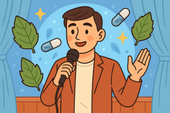
Supplements to Stay Calm Before Public Speaking
Breathwork is one of the simplest yet most powerful tools for calming pre-performance stress 🌬️. By slowing and deepening your breathing, you lower cortisol, steady your heartbeat, and re-center your mind. Learn the science behind how controlled breathing activates your parasympathetic nervous system — helping you speak, perform, or focus with grounded confidence. 🌿
-
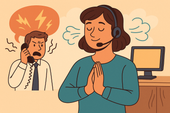
How to Handle Customer Service Stress Without Losing Your Cool 💬🧘♀️
Customer service can test even the calmest person’s patience. 😤 Learn how to handle difficult clients and daily pressure without losing your cool — through better mindset management, calming breathwork, and practical communication tools. Stay grounded, protect your energy, and transform stress into strength. 🌿
-
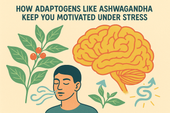
How Adaptogens Like Ashwagandha Keep You Motivated Under Stress
Feeling overwhelmed and unmotivated? 🌿 Discover how adaptogens like Ashwagandha can help you stay centered, focused, and energized under stress. Learn how supplements, breathwork, and therapy work together to restore your natural motivation and help you thrive — even during life’s toughest moments. 💪✨
-
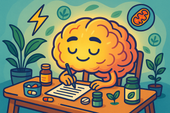
Supplements That Support Long-Term Productivity Without the Crash ⚡🌿
Cortisol — your body’s main stress hormone — can be both your best friend and worst enemy. ⚡ When balanced, it keeps you focused, energized, and ready to act. But when it stays high for too long, it leads to fatigue, anxiety, and emotional crashes. Learn how to regulate cortisol naturally through supplements, sleep, and stress management to maintain calm, steady productivity. 🌿
-
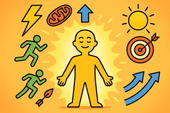
Why Energy Levels and Motivation Go Hand in Hand ⚡🧠
B-vitamins are the brain’s spark plugs 🔋. They turn food into fuel, support neurotransmitter production, and keep your mood, energy, and focus balanced. Learn how vitamins like B6, B9, and B12 work together to power the nervous system, reduce fatigue, and keep motivation high. 🌿
-
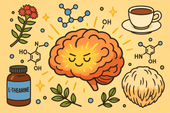
The Science of Motivation: Can Nootropics Help You Stay Focused? 🧠⚡
Nootropics are nature’s tools for sharper thinking and sustainable focus 🧠🌿. From Rhodiola and Lion’s Mane to L-theanine and Bacopa, these brain-boosting compounds enhance motivation, memory, and stress resilience. Learn the science behind how nootropics work — and how to use them safely for peak mental performance and clarity. ⚡
-
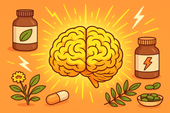
How Natural Supplements Can Boost Your Daily Drive
Cortisol is your body’s main stress hormone — powerful, necessary, but often misunderstood. ⚡ When balanced, it keeps you alert and energized; when chronically elevated, it drains mood, motivation, and focus. Learn how to regulate cortisol naturally through nutrition, supplements, and calming lifestyle habits for steady energy and emotional balance. 🌿
-
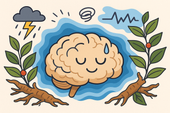
Ashwagandha for Stress and Low Mood
Breathwork is more than a relaxation tool — it’s a way to rewire your nervous system. 🌬️ Through intentional breathing, you can reduce stress hormones, improve focus, and calm emotional turbulence. This guide explores the science of breathwork and its powerful effects on mental clarity, resilience, and emotional regulation. 🌿
-
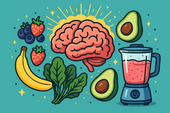
Mood-Boosting Smoothie Recipes
Your blood sugar affects far more than energy — it influences mood, focus, and emotional stability too 🍎. Learn how maintaining balanced glucose levels supports brain health, reduces anxiety, and prevents emotional crashes. Discover the foods and habits that keep your mind calm and your energy steady throughout the day. 🌿
-
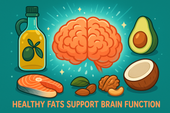
How Healthy Fats Support Brain Function
Your brain thrives on healthy fats 🧠💧. From omega-3s to MCTs, the right fats enhance focus, memory, and mood while protecting against inflammation and aging. This article explores how good fats — like those from olive oil, salmon, avocado, and nuts — build sharper thinking, emotional balance, and lasting brain vitality. 🌿
-
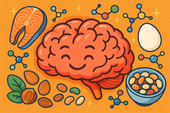
The Role of Protein in Mental Clarity
Protein isn’t just for muscles — it’s for your mind. 🧠 This guide explores how amino acids from high-quality protein fuel neurotransmitters, stabilize mood, and sharpen focus. Learn how balanced protein intake supports dopamine, serotonin, and energy regulation to boost mental clarity and emotional stability naturally. 🍳🌿
-
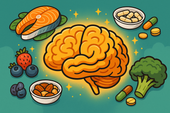
Nutrients That Support Emotional Stability
Your emotions are built from nutrients as much as from thoughts 🌿. This science-backed guide reveals the vitamins, minerals, and healthy fats that stabilize mood and reduce stress — from B-vitamins and magnesium to omega-3s and probiotics. Learn how balanced nutrition supports neurotransmitters, strengthens resilience, and promotes lasting calm and clarity 🧠✨.
-
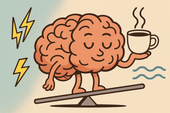
How Caffeine Affects Your Mood ☕
Your morning coffee might lift your spirits — but what’s really happening inside your brain? ☕ This in-depth guide explores how caffeine affects mood, motivation, dopamine, and stress. Learn how to enjoy caffeine mindfully without triggering anxiety, burnout, or emotional crashes. Discover the science behind your energy highs and lows — and how to find calm, sustainable focus. 🌿
-
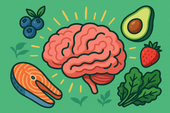
The Best Anti-Inflammatory Diet for Mental Health
Inflammation doesn’t just affect your body — it impacts your mood, focus, and emotional resilience too 🌿. This comprehensive guide reveals how an anti-inflammatory diet can support mental health by reducing neuroinflammation, balancing gut bacteria, and stabilizing blood sugar. Learn which foods to eat (and which to avoid) to protect your brain, boost serotonin, and promote lasting calm. 🧠✨
-

Why Sugar Spikes Can Worsen Depression
Sugar highs can make you feel good for a moment — but what comes next can fuel emotional crashes and deepen depression 🍭. This article explains how blood sugar spikes disrupt brain chemistry, increase inflammation, and destabilize serotonin. Learn how food, supplements, breathwork, and therapy can help you break the sugar–mood cycle and restore lasting emotional balance 🌿.
-
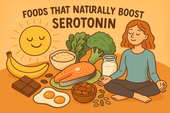
Foods That Naturally Boost Serotonin
Serotonin isn’t just a brain chemical — it’s your body’s built-in mood stabilizer 🌞. This in-depth guide explores how natural foods like salmon, eggs, bananas, and dark chocolate can elevate serotonin levels, while gut health, key nutrients, supplements, breathwork, and therapy create the perfect synergy for calm and emotional balance. Learn how to support your mind through diet, lifestyle, and mindset — naturally. 🌿
-
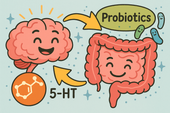
Probiotics for Mood Balance
-
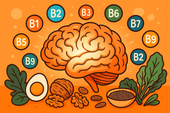
B-Vitamins and Their Role in Mental Health
Methylation is one of your body’s most important biochemical processes — influencing mood, energy, and focus. Powered by B-vitamins like B6, B9, and B12, it helps your brain create serotonin, detox efficiently, and maintain emotional balance. 🌿
-
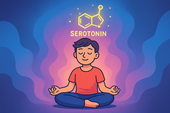
5-HTP for Serotonin Support
Calm isn’t just an emotion — it’s a physiological state where your body and mind finally sync in peace. By slowing your breath, softening your thoughts, and creating safety within, you restore the deep relaxation your nervous system craves. 🌿
-
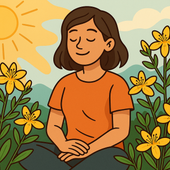
St. John’s Wort for Mild Depression
Antidepressants can be life-changing for many — but understanding how they work and what natural options like St. John’s Wort can complement them is key. Learn how both approaches affect brain chemistry, mood balance, and long-term emotional wellness. 🌿
-
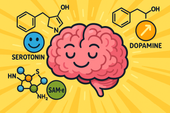
SAM-e: A Natural Mood Booster
Emotional regulation is the art of staying calm and grounded, even when life feels chaotic. By balancing your brain, body, and breath, you can respond with clarity instead of reacting from stress — building real emotional resilience and inner peace. 🌿
-

Rhodiola Rosea for Emotional Resilience
Neuroplasticity is your brain’s ability to grow, adapt, and heal — even after stress or trauma. Every thought, emotion, and habit reshapes your neural pathways, helping you build stronger emotional resilience, sharper focus, and lasting mental balance. 🌿
-
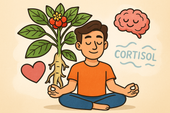
Ashwagandha for Stress and Low Mood
Adaptogens are nature’s stress balancers — powerful herbs like ashwagandha, rhodiola, and reishi that help your body adapt to tension, fatigue, and change. By regulating cortisol and supporting your nervous system, they build calm focus and emotional resilience from the inside out. 🌙
-
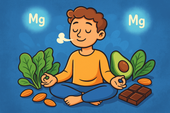
Magnesium’s Role in Emotional Regulation
Neuroscience helps us understand why we feel, think, and react the way we do. From brain chemistry and neural circuits to stress responses and emotional learning, the science of the brain reveals how our minds can heal, grow, and find balance. 🌿
-
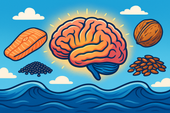
Omega-3 Fatty Acids and Emotional Well-Being
Nutrients aren’t just fuel — they’re communication signals that tell your brain and body how to function. From magnesium and vitamin D to omega-3s and B vitamins, the right mix of nutrients helps calm your mind, balance hormones, and support emotional and physical well-being. 🌙
-
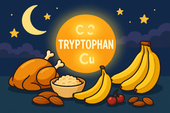
The Role of Tryptophan in Sleep Health
Mental health isn’t just the absence of illness — it’s the foundation of calm, focus, and emotional resilience. From managing stress and anxiety to nurturing self-compassion, understanding your mental well-being is the first step toward a balanced, more peaceful life. 🌿
-

Nutrients That Promote Nighttime Relaxation
Potassium does more than balance fluids — it also helps your body and mind relax at night. By calming nerves, reducing muscle tension, and supporting steady heart rhythm, potassium-rich foods like bananas, sweet potatoes, and coconut water can promote deeper, more restful sleep. 🌙
-

Sleep-Friendly Smoothie Recipes
Melatonin is your body’s natural sleep signal — a hormone that tells your brain when it’s time to rest. Learn how melatonin works, which foods and habits boost its production, and how to use it wisely for deeper, more restorative sleep without dependence. 💤
-
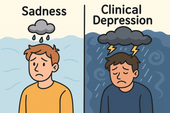
The Difference Between Sadness and Clinical Depression
Your emotions aren’t just in your mind — they’re written in your brain chemistry. Serotonin, dopamine, and GABA work together to regulate mood, motivation, and calm. When they fall out of balance, you may feel anxious, fatigued, or low. Learn how these brain chemicals influence your mental health and what you can do to restore harmony naturally. 🌿
-
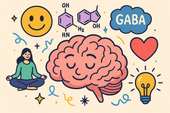
How Brain Chemistry Influences Mood
Your brain is a symphony of neurotransmitters — serotonin, dopamine, GABA, and more — working together to shape how you think and feel. When they’re balanced, you experience calm focus and emotional stability. When they’re not, mood swings and fatigue can follow. Learn how to naturally support these vital messengers for better mood and mental clarity. 🌿
-
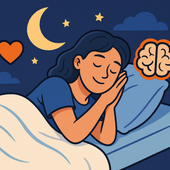
Why Emotional Resilience Improves Sleep
Emotional resilience isn’t just about mental strength—it’s also a key ingredient for better sleep. When your emotions are balanced, your body releases fewer stress hormones, your mind quiets faster, and your sleep becomes deeper and more restorative. Learn how to cultivate calm through mindset, breathwork, and daily habits. 🌙
-
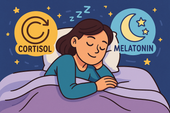
The Connection Between Stress Hormones and Sleep
Chronic stress can quietly reshape your body’s chemistry, raising cortisol, disrupting sleep, and draining your energy. This guide explores how long-term stress affects your nervous system, hormones, and rest—and how to restore calm through breathwork, nutrition, and daily recovery rituals. 🌿
-
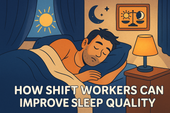
How Shift Workers Can Improve Sleep Quality
For shift workers, caffeine can be both a lifeline and a sleep disruptor. Learn how to use it strategically—boosting alertness during work hours without sabotaging rest. This guide explores timing, dosage, and smarter natural alternatives to keep your energy steady and your sleep restorative. 🌙
-
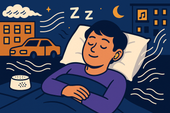
How to Sleep Better in a Noisy Environment
Living in a noisy area doesn’t mean sacrificing your rest. Learn practical and natural strategies to sleep better in loud environments—from using sound masking and breathwork to creating calming rituals that help your brain tune out the chaos. Find inner silence even when the world outside won’t quiet down. 🌙
-
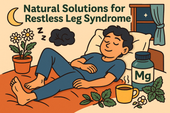
Natural Solutions for Restless Leg Syndrome (RLS)
Struggling to sleep deeply and wake refreshed? This soothing guide explores how the body restores itself during quality sleep—and how to support it naturally. Learn about the science of rest, the role of nutrients, and the rituals that promote deep, uninterrupted slumber. 🌙
-
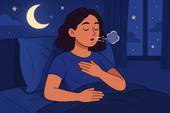
How to Overcome Middle-of-the-Night Anxiety
Middle-of-the-night anxiety can make even the calmest mind spiral into worry. This guide reveals practical, evidence-based techniques to help you stop the 3 A.M. overthinking loop—from breathwork and journaling to herbal supplements and therapy-based tools. Learn to retrain your nervous system and find peace when the world is asleep. 🌙
-
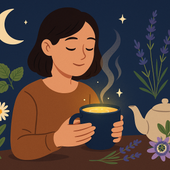
The Perfect Evening Herbal Blend
Discover the calming power of nature in your teacup. The perfect evening herbal blend combines chamomile, lemon balm, lavender, and adaptogens like ashwagandha to relax your body and quiet your mind before bed. Learn how to craft and customize a soothing, sleep-enhancing tea ritual that helps you unwind, restore, and wake up refreshed. 🌙
-
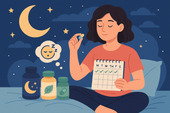
How to Cycle Sleep Supplements for Maximum Effectiveness
Wondering why your sleep supplements stop working after a while? This guide breaks down how to cycle sleep aids like melatonin, magnesium, and ashwagandha for consistent, long-term results. Learn when to rest your body, how to prevent tolerance, and what natural methods—like breathwork and therapy—enhance your sleep cycles. 🌙
-
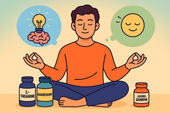
The Best Supplements for Both Relaxation and Focus
Calm your mind and sharpen your focus with the perfect blend of natural supplements. From L-theanine and magnesium to Rhodiola and Lion’s Mane, this science-based guide shows how to achieve relaxation and clarity at the same time. Discover stacks that support your nervous system, balance mood, and keep your mind laser-focused without the crash. 🌿
-
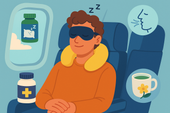
How to Sleep Better During Travel
Traveling can be thrilling—but sleepless nights can ruin even the best trips. From supplements like magnesium and melatonin to soothing breathwork and therapy-based techniques, this guide shows you how to sleep deeply on planes, in hotels, or across time zones. Learn to calm your body, reset your circadian rhythm, and build rest rituals that work anywhere in the world 🌙
-
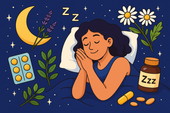
Improving Sleep in Menopause with Supplements
Menopause can make peaceful sleep feel impossible — but balance is within reach 🌿. This article explores how supplements like magnesium, ashwagandha, and black cohosh can ease night sweats, calm the mind, and restore your natural sleep rhythm during hormonal changes.
-
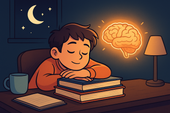
Sleep Support for Students During Exams
Exam stress can make it hard to rest — but sleep is what helps you perform your best 💤. This article explains how to improve sleep quality during exams through better study habits, natural supplements, breathwork, and therapy tools to calm the mind and sharpen focus.
-
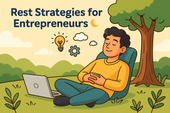
Rest Strategies for Entrepreneurs
Entrepreneurs often burn out chasing their vision — but rest is the real fuel for success 🌙. This article explores science-backed recovery strategies for founders, including sleep, breathwork, therapy, and nutrition techniques that sharpen creativity and sustain performance.
-

How Sleep Affects Athletic Recovery
Sleep is where strength is built. 💤 This article explores how deep sleep drives muscle recovery, hormonal balance, and athletic performance — plus how supplements like magnesium, melatonin, and ashwagandha can enhance overnight repair and boost training results.
-

Better Sleep for People with Chronic Pain
Living with chronic pain makes sleep feel impossible — but it’s not. 🌙 This article explores how pain disrupts rest and how to rebuild your sleep through gentle breathwork, calming nutrition, therapy, and supplements that help your body relax and heal.
-

How to Sleep Better During Seasonal Changes
Seasonal shifts can throw your sleep off balance 🌦️. This article explains how light, temperature, and hormones change with the seasons — and how to restore your rhythm naturally through melatonin-supportive foods, breathwork, and therapy for emotional balance.
-

Foods That Naturally Boost Melatonin
Want to fall asleep faster without supplements? 🌙 This article explores how foods like tart cherries, pistachios, and kiwi naturally boost melatonin, the hormone that regulates sleep. Learn how to build an evening meal plan — plus simple rituals like breathwork and herbal tea — to improve rest and reset your circadian rhythm.
-

The Role of Herbal Tea in Relaxation
Herbal tea is more than comfort in a cup 🍵 — it’s nature’s gentle way to calm the mind and relax the body. This article explores how teas like chamomile, lavender, and lemon balm support stress relief, sleep quality, and emotional balance — plus how to pair them with magnesium, breathwork, and mindful rituals for deeper peace.
-

Lavender Extract and Its Calming Effects
Lavender extract is one of nature’s most soothing remedies 🌸. This article explores how lavender calms the nervous system, lowers cortisol, and improves sleep — plus how to combine it with magnesium, breathwork, and therapy for deep relaxation and emotional balance.

















































